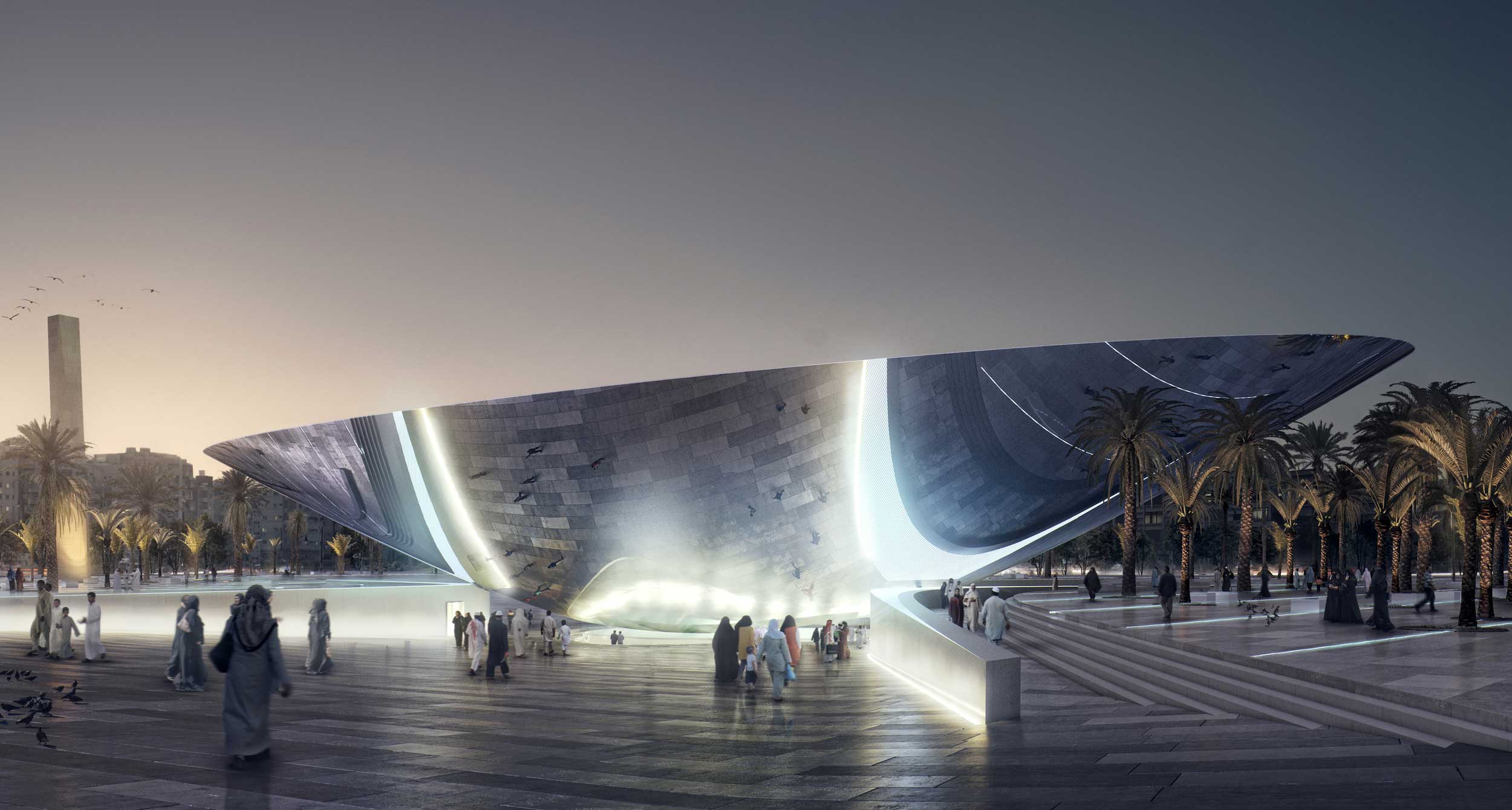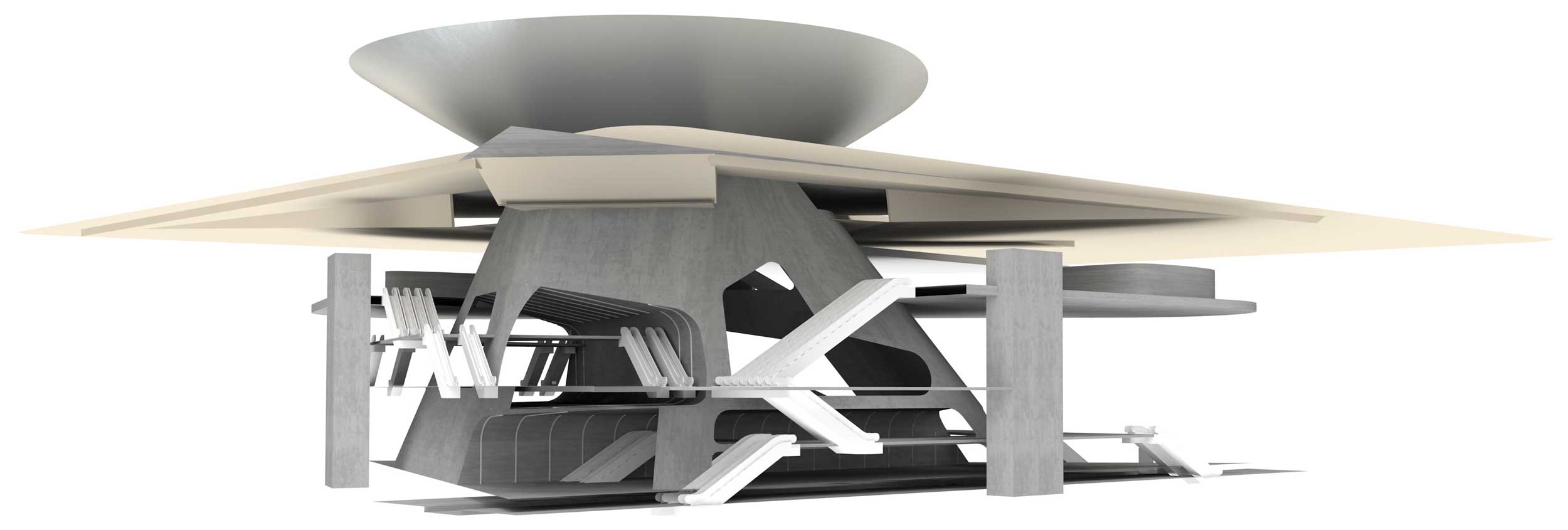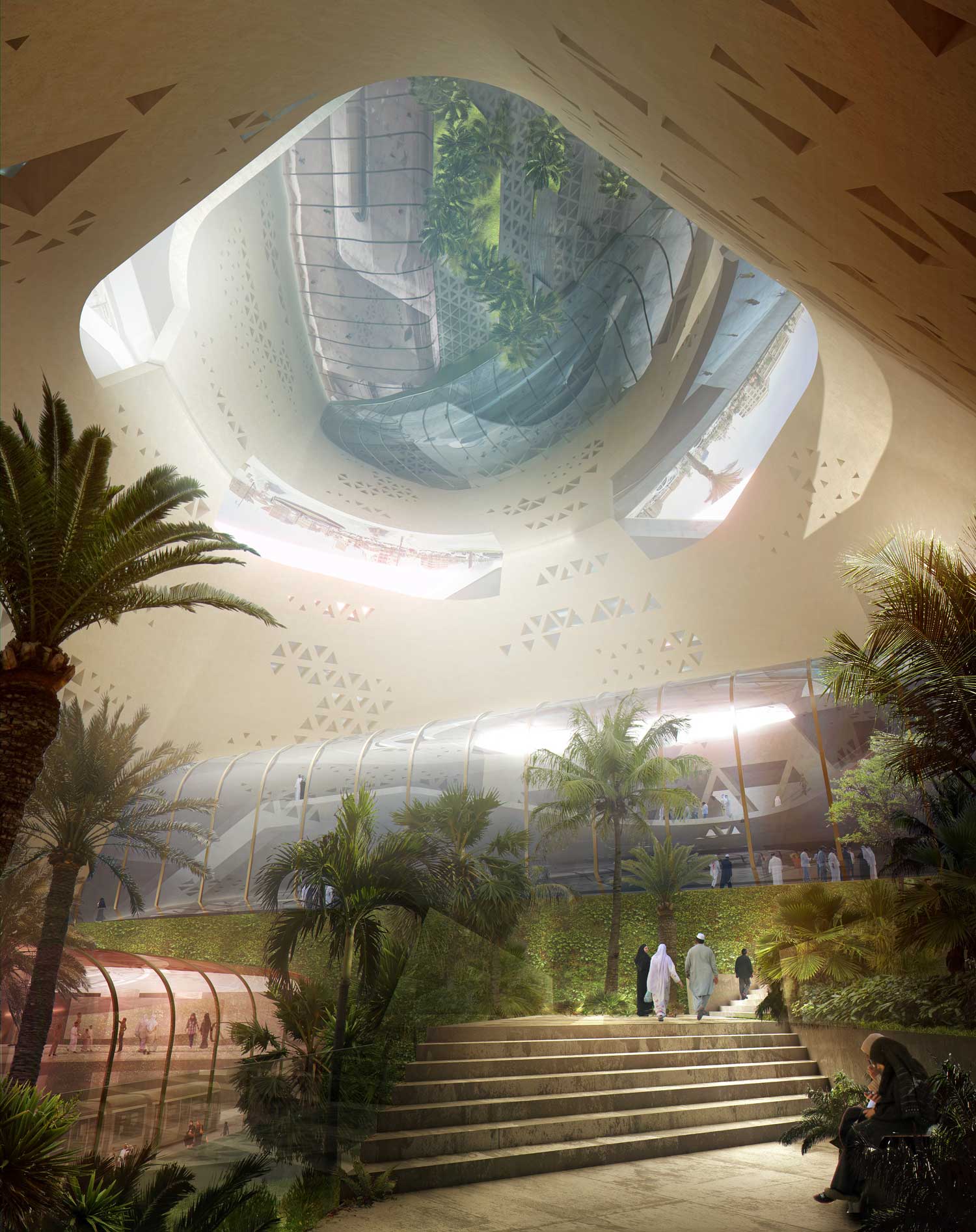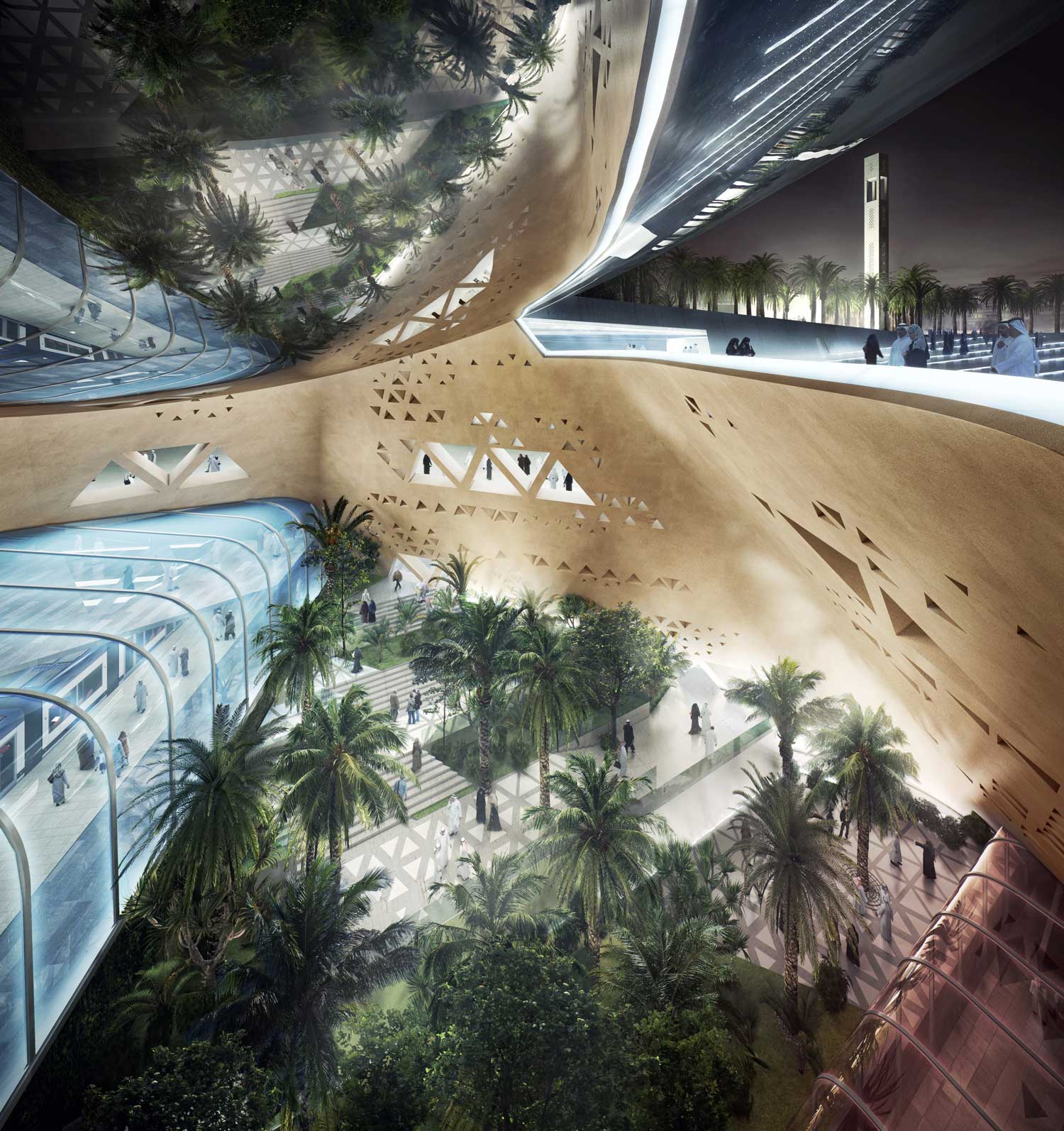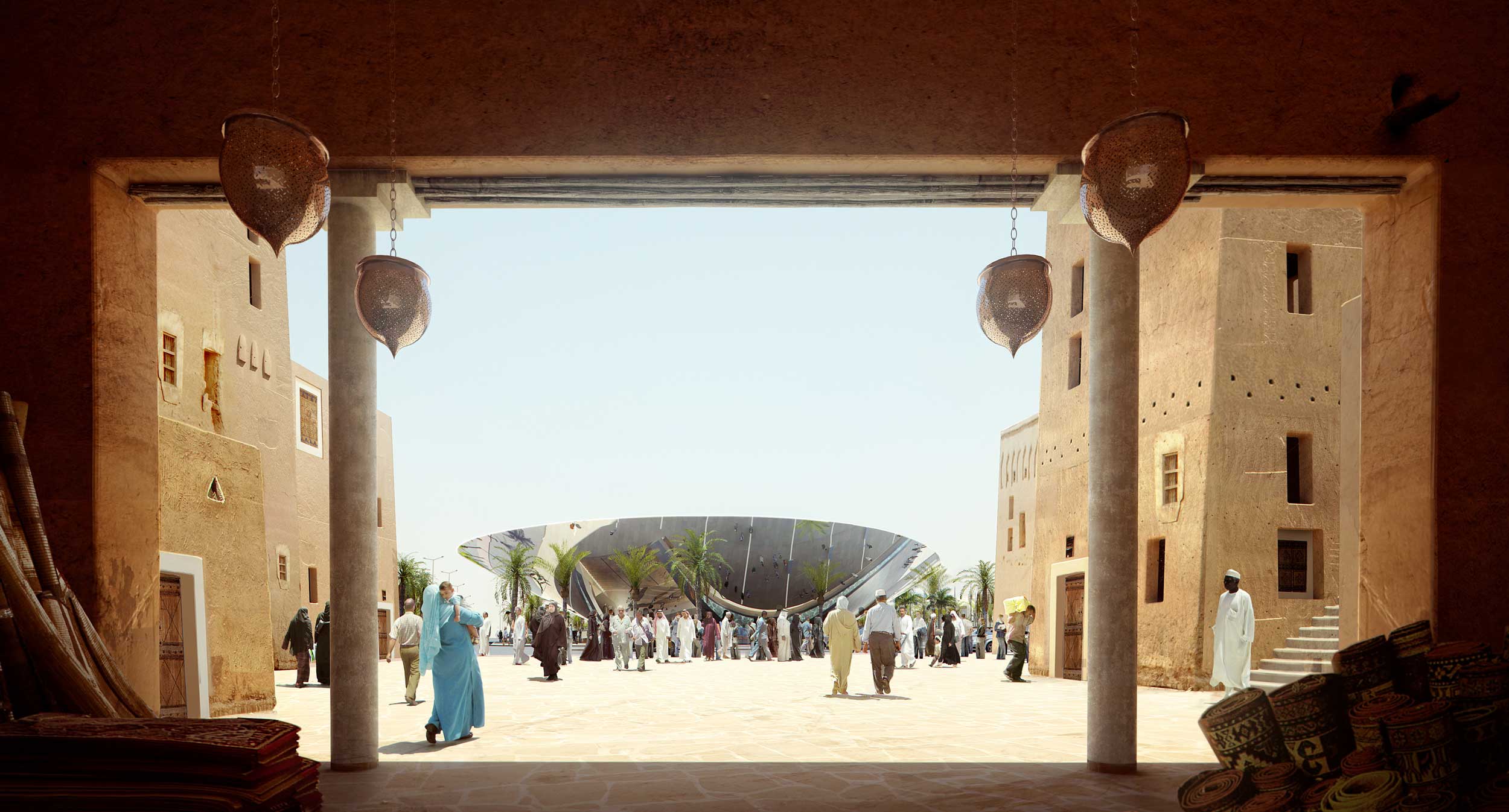
We are excited to be involved in the design of the innovative Qasr Al Hokm Downtown Metro Station in Riyadh alongside Norwegian architectural firm Snøhetta on behalf of the Arriyadh Development Authority. Part of Riyadh’s new underground network, the station is set to bring world-class architecture into the heart of an urban environment steeped in history.
A landmark train station structure with curved stainless steel façade in Riyadh.
Combining function and clean-cut aesthetics, the station’s form will be as striking above ground as at platform level. A curved stainless-steel canopy directs sunlight downwards as a natural means of brightening the areas below, and visually connects the station with its surroundings, providing users with a reflection of the streetscape above and projecting an image of the platform upwards.
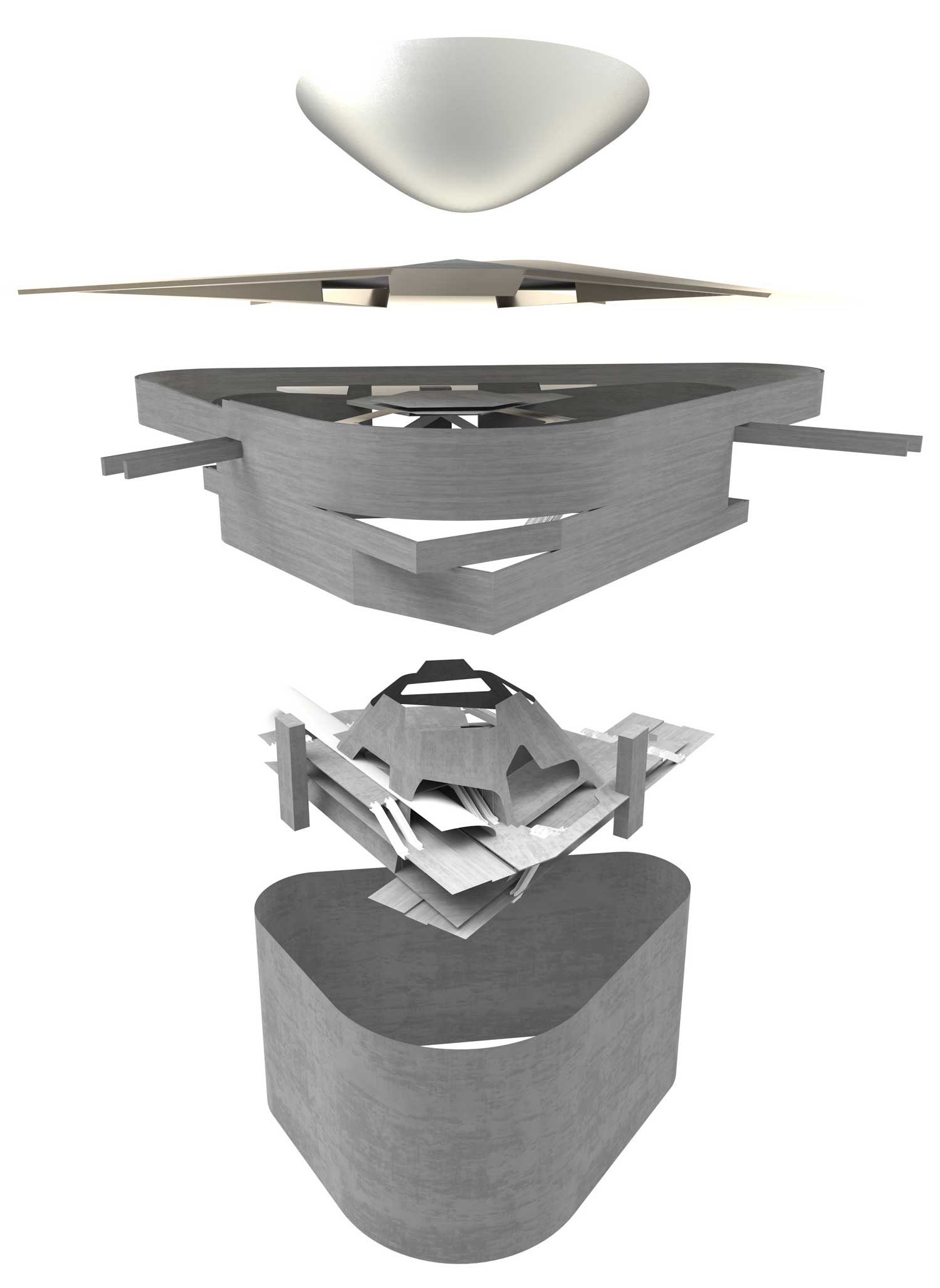
A large concrete ‘pyramid’ structure with landscaping at its base provides support for aspects of the concourse level and ramps, and separates an open central area from internal circulation spaces. The ADA’s intention is to include offices, retail units, and a three-storey car park with a new mosque overhead.
We considered several methods of assembly for the canopy, using finite element analysis to test the response of each design to a number of parameters. The stainless steel panels are connected to create a seamless mirrored form; the semi-monocoque design is hung from a structural trussed rib solution.
The station is set to extend more than 30 m into the ground, so careful investigation into ground conditions and basement construction options has been crucial. Sensitivity to potential obstructions is essential, since it is positioned between a number of major roads and cuts close to services. Due to the good bearing capacity of the limestone ground, raft foundations will be adopted, tied to secant piled basement retaining walls, which are restrained using ground anchors.
The city’s ‘Red Line’ and ‘Blue Line’ tracks both pass through the station: the former will be founded on the raft, but the latter, formed as a bridge, will need to span a considerable distance, running through the cone pyramid itself.
